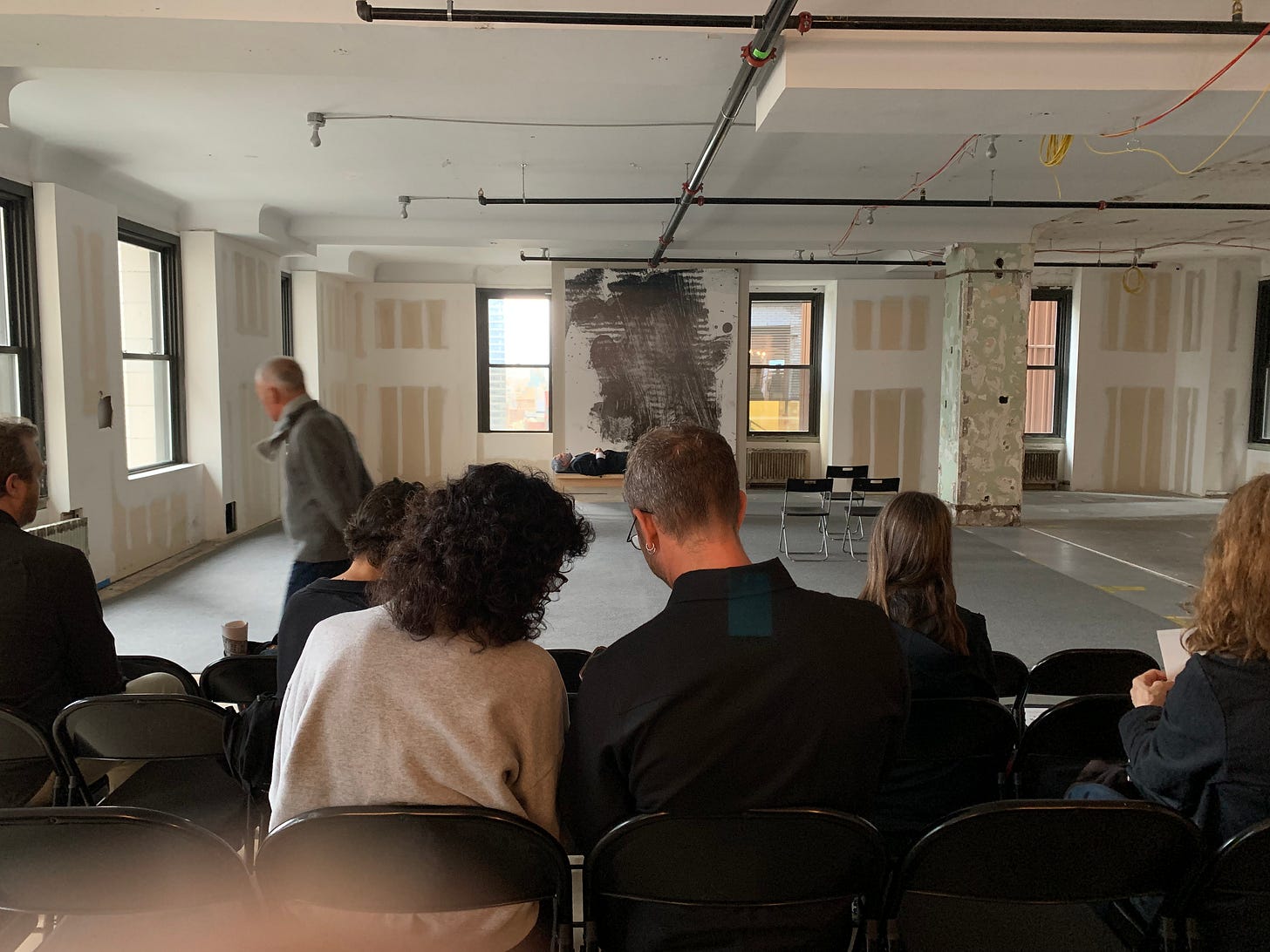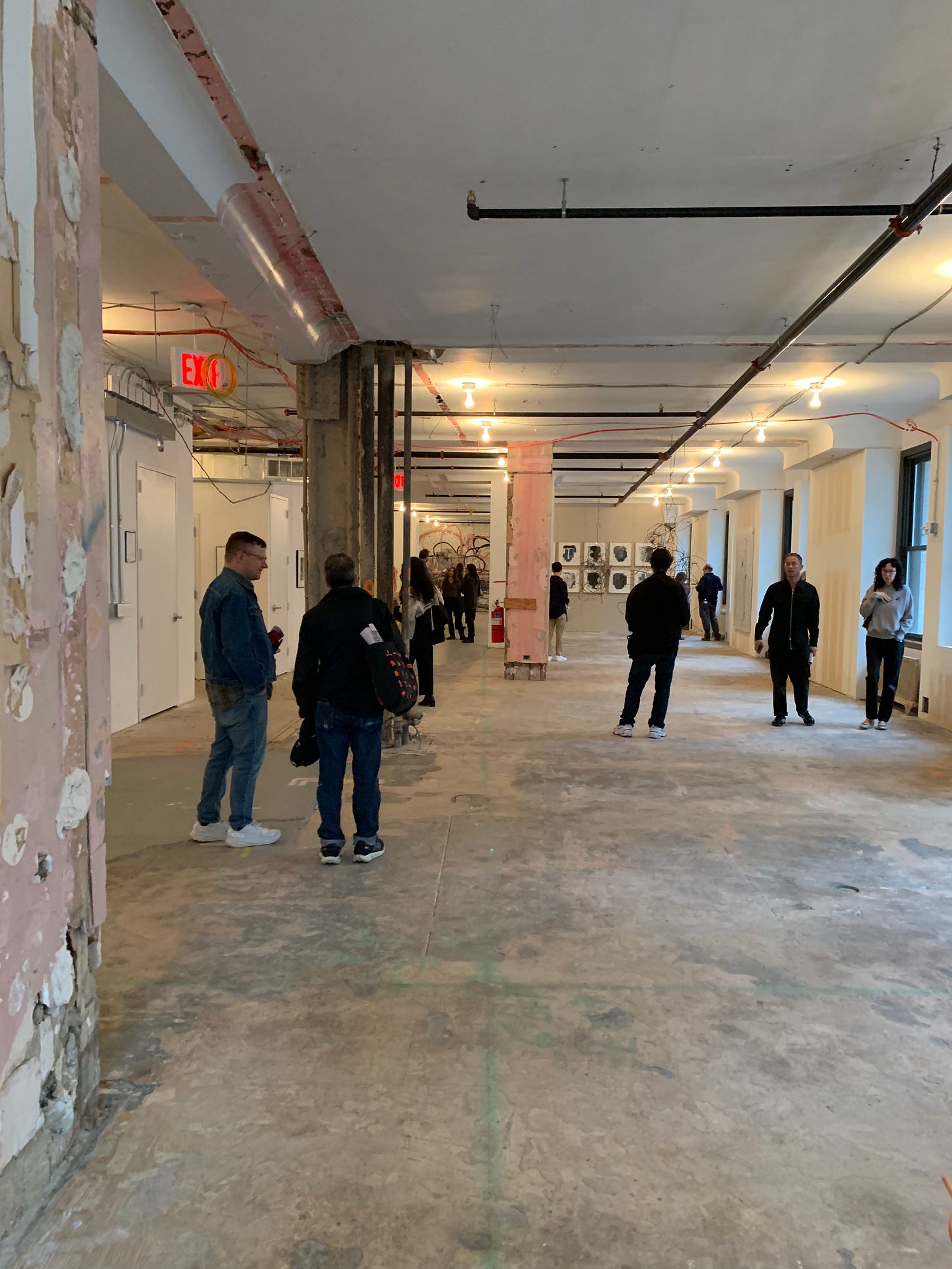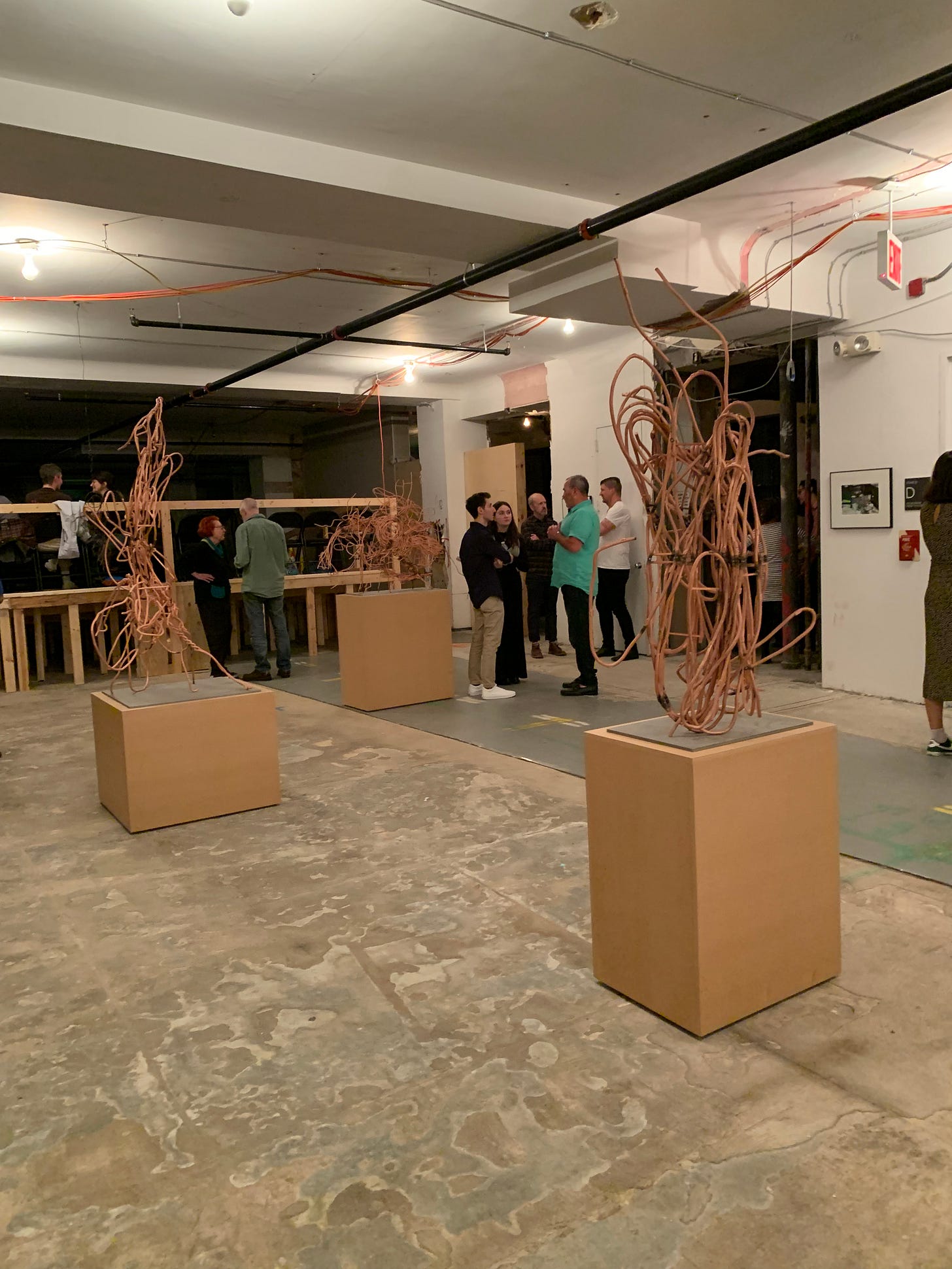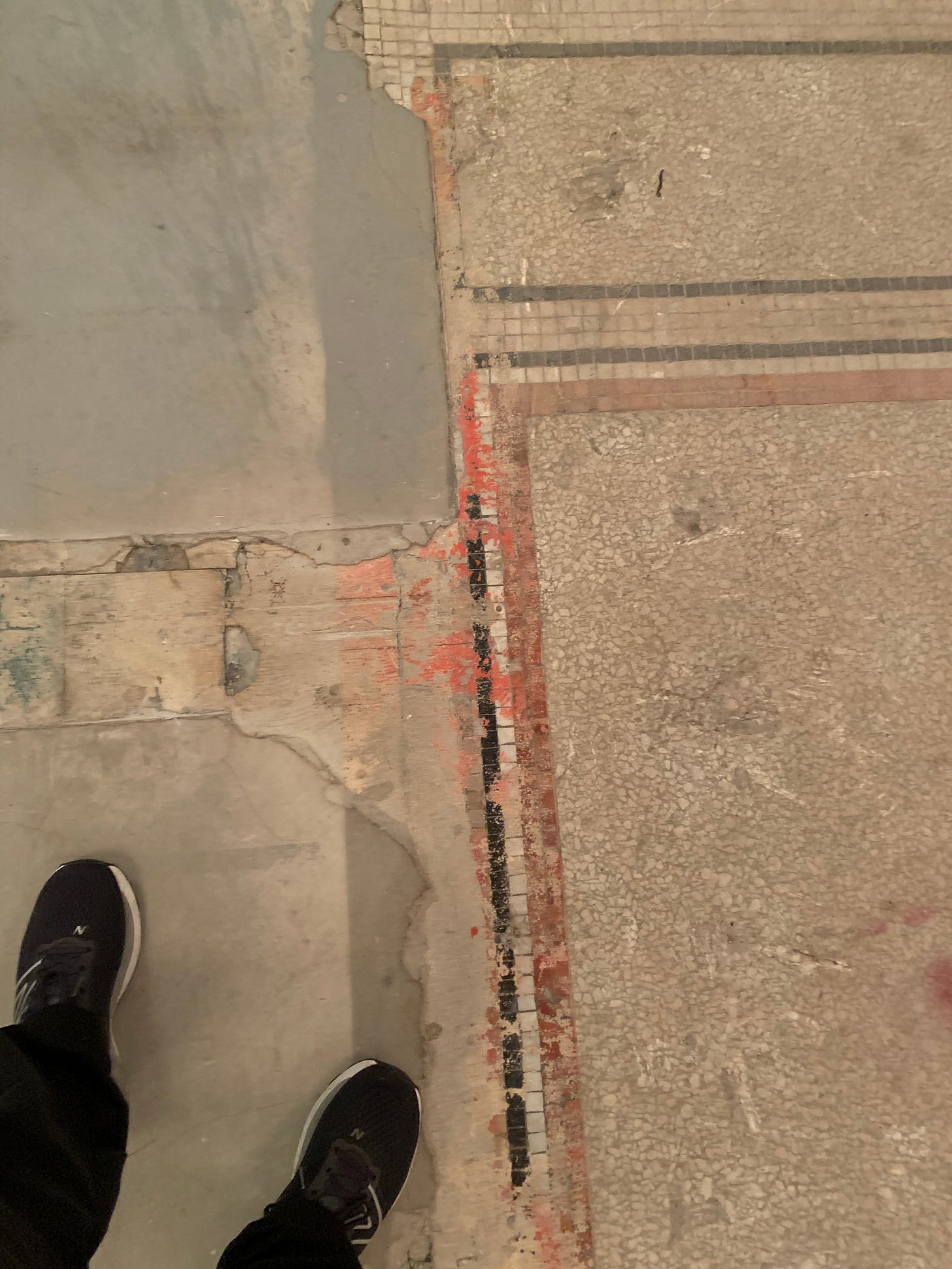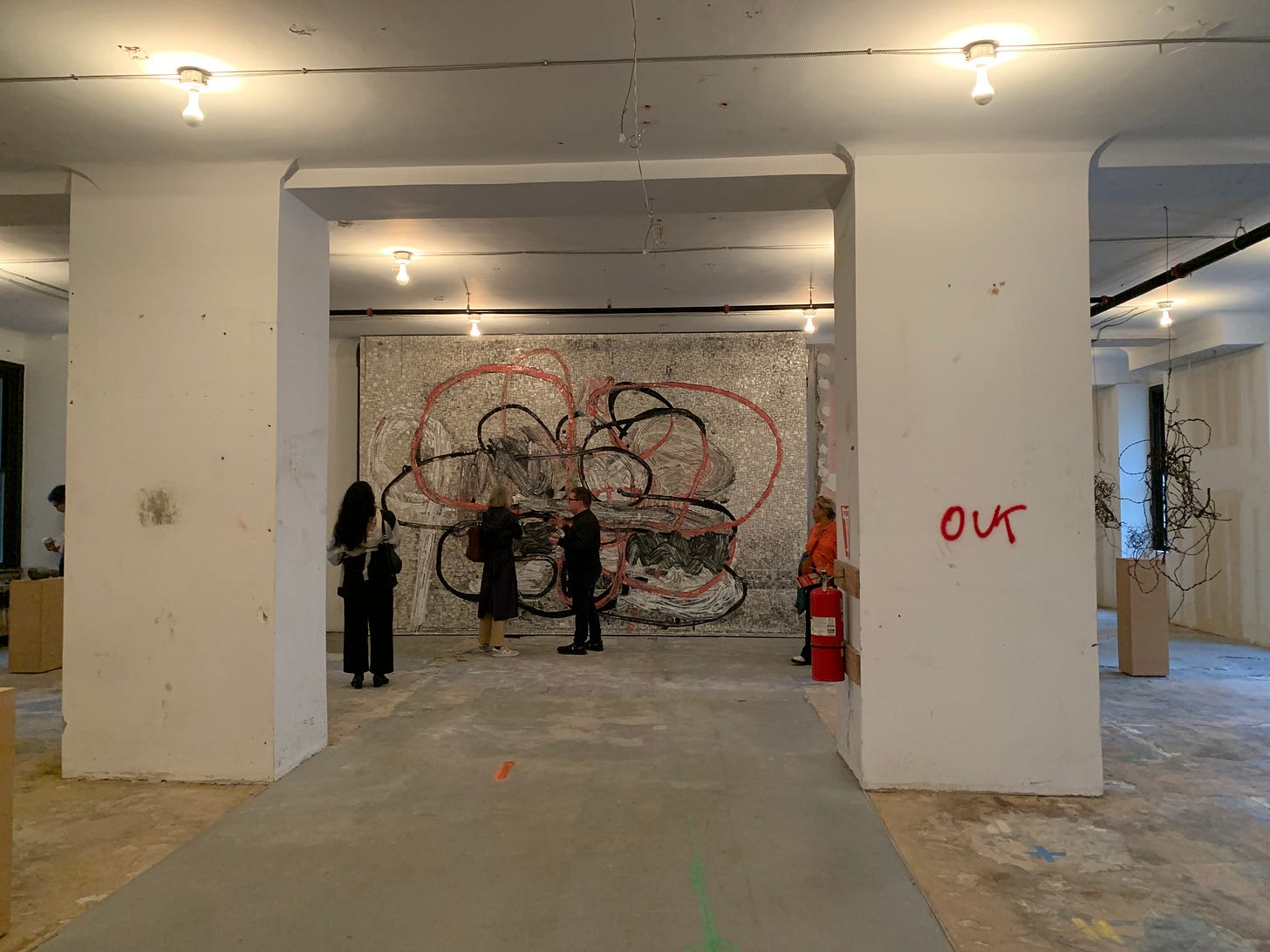Richard Maxwell premieres his BUILDING’S I & II at 101 Greenwich St. in the Financial District. The performance space is on the 19th floor of the building which has been taken over by artist Christopher Wool’s installation, See, Stop, Run. Maxwell’s play is staged in one of its corners.
BUILDING’S I & II begins as a story about three siblings who have gathered to mourn the death of their father, the owner of the building in which we are sitting. As the three adult children fight over their father’s legacy it becomes clear that the building represents a brick and mortar asset that has lost its value to digital capital.
The daughter Erla (Sylvia Gorelick) has been named executor and wants to sell the building as quickly as possible before it declines anymore in value. But the oldest son (Bob Murphy) wants to keep the building and his job as the proprietor of a shady pub on the building’s ground floor. The third son, Mikey (Matthew Carey Salyer) agrees with his sister and is ready to fight dirty to overpower the brother who wants to keep the building in the family.
The first part of the play follows this family conflict and builds convincingly to a dramatic climax. When the audience returns after a short break, the second part takes on a completely different tone. The play becomes a kind of philosophic vaudeville with Irish folk inflected music written by Maxwell and played soulfully by the performers. In the second half of the play Erla ponders whether she is Artificial Intelligence. The awareness of this possibility seems to dawn on her in real time as we watch the play. And when the personification of Death comes to visit her, Erla rather glumly insists that she can’t be killed because she is digital capital liberated from humanity.
Maxwell directs his performers in his signature style that features flat line readings. At first glance the style seems to be a full out rejection of realistic acting. The flat line readings are accompanied by a similarly flat delivery style, with performers shifting between two sharp angles: one where the character face each other and the other where the characters shift to face the audience.
This style does two fascinating things. At first it appears to distance the audience from the play and it forces us to focus on Maxwell’s text, for better or for worse. But it also serves as a uniform acting style with all the actors on the same page whether they have been professionally trained or not. And this uniformity pays off when it comes to a performer like Bob Murphy. Murphy is an untrained actor and a former professional boxer and his role as the proprietor of an Irish bar that caters to the mob fits him like a glove. You would need the caliber of a Meryl Streep at her prime to piece together all the cultural vocal cues that Murphy carries with him naturally. And Murphy also has a tough and menacing walk and bearing that would be difficult for an actor to assemble artificially. Surprisingly, Maxwell’s mannered acting style ends up circumventing Method-style technique to arrive at a level of realism that Method-style technique rarely ascends to. Still, these mannerisms tend to disintegrate as the play proceeds and turns more emotionally heated with the result of the actors slipping in and out of the performance style. And it is oddly Bob Murphy, an untrained actor, who gives the most traditionally affecting performance in the show.
Maxwell’s auteurism has its benefits and drawbacks. The benefits are that he can fashion a production as cohesive as this one without any of his theatrical vision being diluted by the current obsessions of the nonprofit theater world. The nonprofit world also has a glacial development process and Maxwell’s plays usually reach his audience when the zeitgeist he is drawing from is still alive and kicking. The drawbacks are his idiosyncrasies can border on the precious. The program for the show which was available only by QR code, refrained from listing who played what or even the names of the play’s characters. Maxwell’s shows are minimally publicized through emails and messages and they tend to sell out quickly because of a loyal following. This scarcity of access encourages a receptive but monocultural club of an audience. And the surroundings of the Christopher Wool installation (see below for images) emphasizes Maxwell’s comfort in being situated as art gallery theater.
Yet Maxwell’s theater is accessible. It is poetic, aesthetic, and philosophic but it resists the iciness of the traditional avant-garde. It wants to reach you emotionally and intellectually and it does so with great skill and tact. Should Maxwell decide to bring his work to a larger audience I believe they would be receptive. I have seen many of Maxwell’s pieces over the years and from the beginning it was clear he was a gifted theater artist. His work has only grown in stature and power since then.
Christopher Wool’s installation on the 19th floor of a financial district building is, like Maxwell’s play, about the death of the 20th century office space and its possible rebirth. It imagines a new cultural use for these spaces, abandoned by digital capital, much in the same way that 1970’s artists in Soho imagined and created new uses for the industrial lofts of the 19th century, abandoned by the off-shoring of American labor.
Wool uses a vocabulary of materials and a color palette that have been gathered from the historical layers of the building’s stripped down interior.
Below is an image of a sculptural grouping of pieces made out of rebar-like material, a bendable steel used to reinforce concrete. The pieces are painted in a Philip Guston/Pepto Bismol pink which is also the color of RedGard, an industrial mixture of rubber and paint used by contractors for waterproofing. (At the right of the image, performers Bob Murphy, in green, and Matthew Carey Salyer, in white, chat with the audience during the break.)
The floor of the building with its exposed original mosaic flooring inspires the centerpiece of Wool’s show...
… a grand mosaic mural that conjures up a lost civilization, perhaps Roman or Byzantine. The building’s interior materials have been excavated and reassembled into a new canvas for Wool’s post-20th century-industrial temple of the arts.




